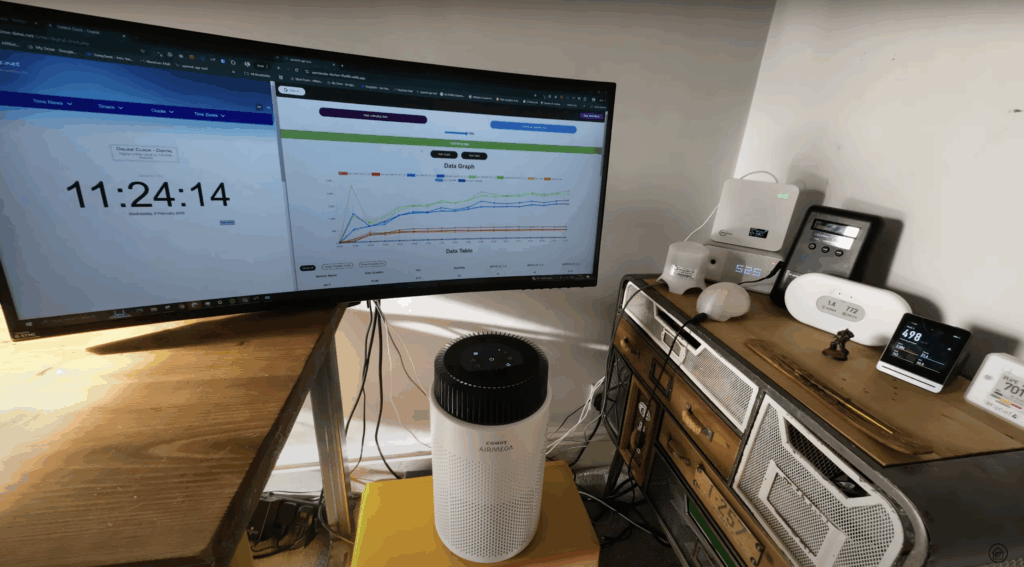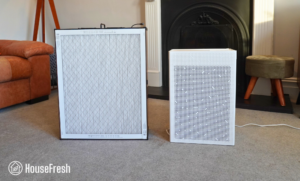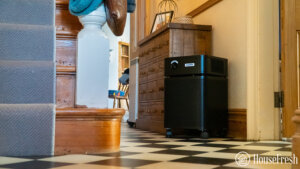If you are not the owner of a water purification system or an aquarium, you might be surprised how activated carbon is used as an air purifier filter. The use of carbon filters for water purification is considered the oldest method of water purification.
People have used it for centuries to filter impurities from drinking water. In the aquarium industry, activated carbon is currently one of the most effective adsorbents and the largest-selling maintenance product. It removes dissolved organic molecules, chloramines, chlorine, and some heavy metals. It is also used to remove residual dyes and medications like antibiotics.
Activated carbon, also known as activated charcoal, is derived from charcoal. It is a form of carbon that has a small charge of electro-positive added to it. The added charge makes it more attractive to impurities and chemicals that are negatively charged. Charcoals used in making activated carbon are made by burning coconut husks, nutshells, hardwood, and other carbon-based materials.
To make it available for chemical reactions and adsorption, carbon is also processed to have a huge surface area and make it very porous. Through the help of nitrogen gas adsorption, it is determined that only 1 gram of activated carbon usually has a surface area of 500 square meters or 1/10 the area of a football field, and 1 pound of activated carbon has 200 miles of fissures and pores with an area of 4 million square feet.
Activated carbon, especially the granulated one combined with the packed tower aeration method, is recognized by EPA (United States Environmental Protection Agency) to remove carbon tetrachloride from drinking water to below 0.005 milligrams per liter or 5 ppb.
Activated carbon is frequently combined with other minerals like zeolite in air purifiers. Zeolite can act as a chemical sieve and a filer for absorbing molecules and ions.
In several models of air purifiers, the carbon is impregnated with potassium iodide and mixed with impregnated active alumina for the absorbent qualities to increase. People with MCS (Multiple Chemical Sensitivity) will benefit from these air purifiers because they can absorb formaldehyde found in furniture upholstery, wood paneling, and carpet. These air purifiers can also remove perfumes and household cleaning chemicals, making your house fresher and breathable for the elderly, children, babies, asthma sufferers, and people in general.
Type of air pollutants activated carbon air filters can remove
Below is a chart that rates the activated carbon filter’s performance on its ability to remove the following contaminants:
Most fumes from household cleaners, cooking, and organic odors can be removed or reduced by activated carbon filters. It can also remove VOC (Volatile Organic Chemicals), solvents, radon, THM (trihalomethane), benzene, Nitrogen dioxide, chlorine, herbicides, pesticides, and many other manmade gasses.
Choosing the right activated carbon air purifier
When buying an activated carbon air purifier, you should choose a filter with a large amount of activated carbon; when we evaluate activated carbon air purifiers, we look at the size in lbs. Many low-quality air purifiers sold in the market contain only a tiny amount of activated carbon. These air purifiers will perform poorly compared to those with bigger volumes of activated carbon.
Another point to consider is whether the activated carbon media can be replaced without changing the whole cartridge. A complete cartridge unit is much more expensive compared to bulk media.
Most lists of air purifiers are nothing more than a list of that year’s bestselling purifiers. Here at HouseFresh, we review and test the performance of all the air purifiers in our home lab. We don’t let manufacturers send us free units as our goal is to be unbiased so we can be free to say if an purifier is terrible. Our ultimate goal is to allow our readers to look beyond marketing hype and discover the right air purifier for their homes.
All the air purifiers we recommend here have a large amount of activated charcoal, either as a separate filter, as with the IQAir Healthpro Plus or as a combined filter, as with the Alen 75i. All the units on our list combine activated charcoal with a high-quality HEPA filter, which has been proven to be the most effective technique for dealing with particulate pollutants. You will notice that none of the air purifiers on our list are low-priced, and this is to be expected as activated carbon isn’t cheap and requires high airflow to be effective.
Now, let’s move forward with the two best-activated carbon air purifiers:
1. IQAir Healthpro Plus
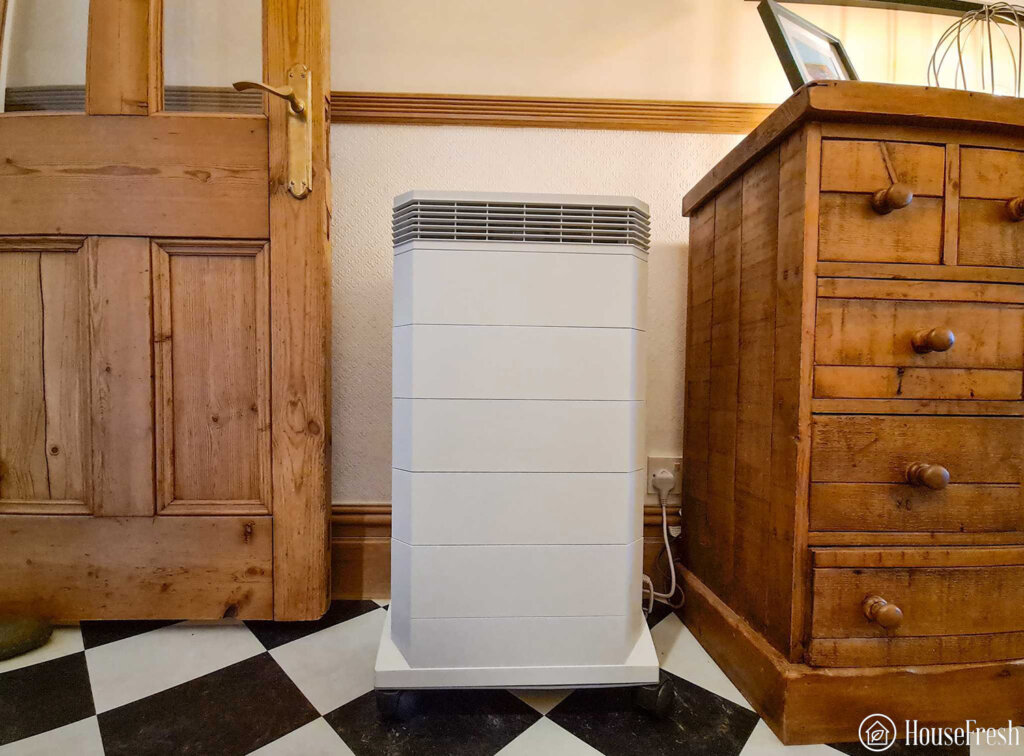
The first thing that stood out for me when we got to review the IQAir Healthpro Plus was the size of the included carbon filters. IQAir calls it a V5-Cell, which is 5.5 lbs and is made of activated carbon and KMnO4-impregnated alumina. As of 2022, this air purifier is our number 1 choice as the best-activated carbon air purifier.
When we got a chance to test the IQAir Healthpro Plus at removing PM1, PM2.5 and PM10 particulate pollutants, it was able to remove all pollutants in 25 minutes, which is one of the better scores we had seen.
One thing to be aware of is that this air purifier is big, which makes sense when considering the large amount of carbon used as part of the filter. Inside the IQAir Health Pro Plus, all the internal space is used to house a pre-filter, HyperHEPA, activated charcoal filter and fan.
What we really like
What we think could be better
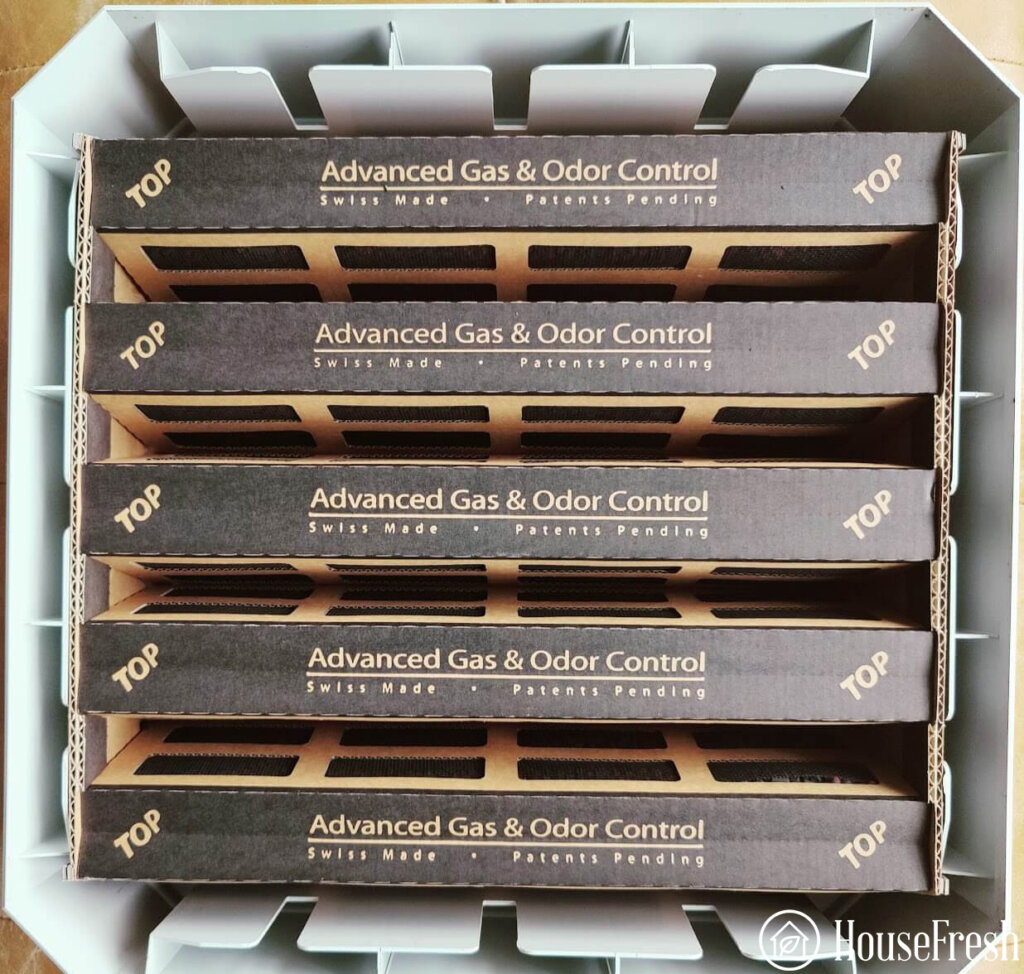

| HouseFresh rating: | ★★★★★ |
| Time to clean our 728 cubic feet test room (with the device running at top speed): | 28 minutes |
| Air purifier technology: | HyperHEPA and V50-CELL gas and odor filter |
| Recommended room size (5 air changes per hour): | 375 sq. ft. |
| Clean air delivery rate (CADR): | Estimated: 250 CFM |
| Dimensions (in inches / in cm): | 28H x 18W x 16D inches (71H x 38W x 41D cm) |
| Weight (in pounds / in kg): | 35 lbs (15.88 kg) |
| Filter life: | 4 years |
| Noise level (measured from 3 ft. away): | Speed 1: 36.9 dB Speed 2: 37.2 dB Speed 3: 40.9 dB Speed 4: 47.2 dB Speed 5: 53.9 dB Speed 6: 61.2 dB |
| Electricity consumption in watts (recorded with an electricity usage monitor): | Standby mode: 1 watts Speed 1: 16.5 watts Speed 2: 32.7 watts Speed 3: 47.3 watts Speed 4: 69 watts Speed 5: 94.3 watts Speed 6: 145.2 watts |
| Estimated running costs (electricity consumption + filter replacements): | $421.47 per year |
| Cost per CADR cfm (based on dust CFM as reported by AHAM): | $3.60 |
| Manufacturer’s warranty: | 10 years |
| Country of manufacture: | Switzerland / Germany |
2. Alen Breathsmart 75i
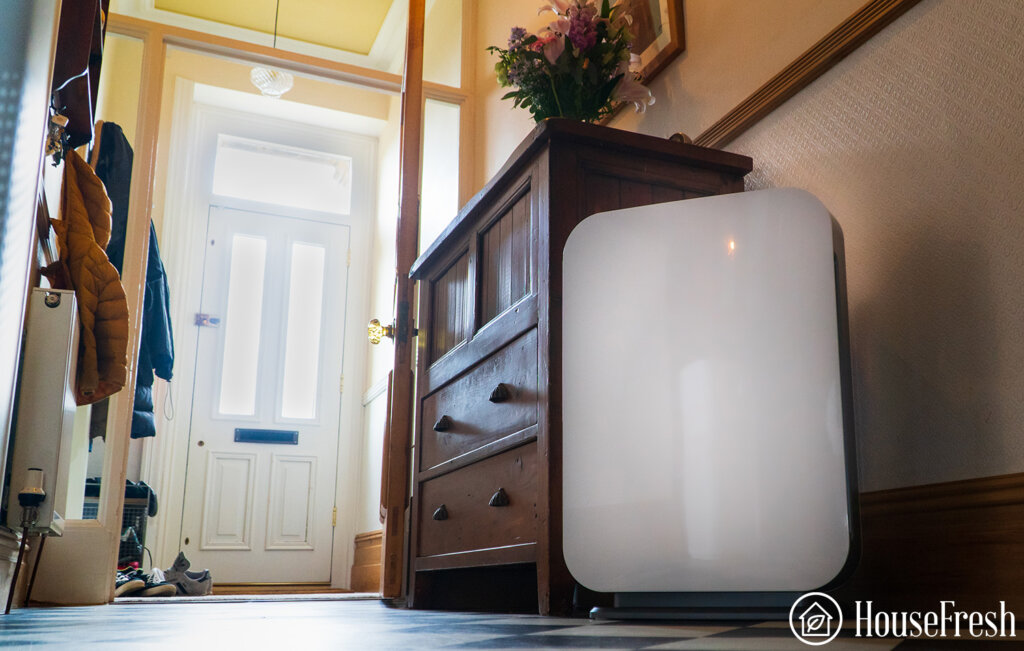
Another air purifier that stood out in our tests for having a huge activated carbon filter was 2.6 lbs/1.17kg. You need to make sure that you choose the right air filter that contains the largest amount of carbon, the B7-MP-Pet/Odor that costs $139.00 to replace every 6 months.
When we tested the Alen 75i at removing tiny particulate pollutants of PM1, PM2.5 and PM10, it removed everything in 24 minutes, one of the fastest units we have tested at removing particulate pollutants
As with the IQAir unit, the Alen 75i doesn’t come cheap at around $800 with the odor carbon filter option. It does come with a range of smart features with App support and auto-mode that switches the unit on as soon it detects pollutants. The stand-out feature with Alen is that they offer a lifetime warranty if you get the filter subscription which is not something that exists with other air purifier brands.
What we really like
What we think could be better
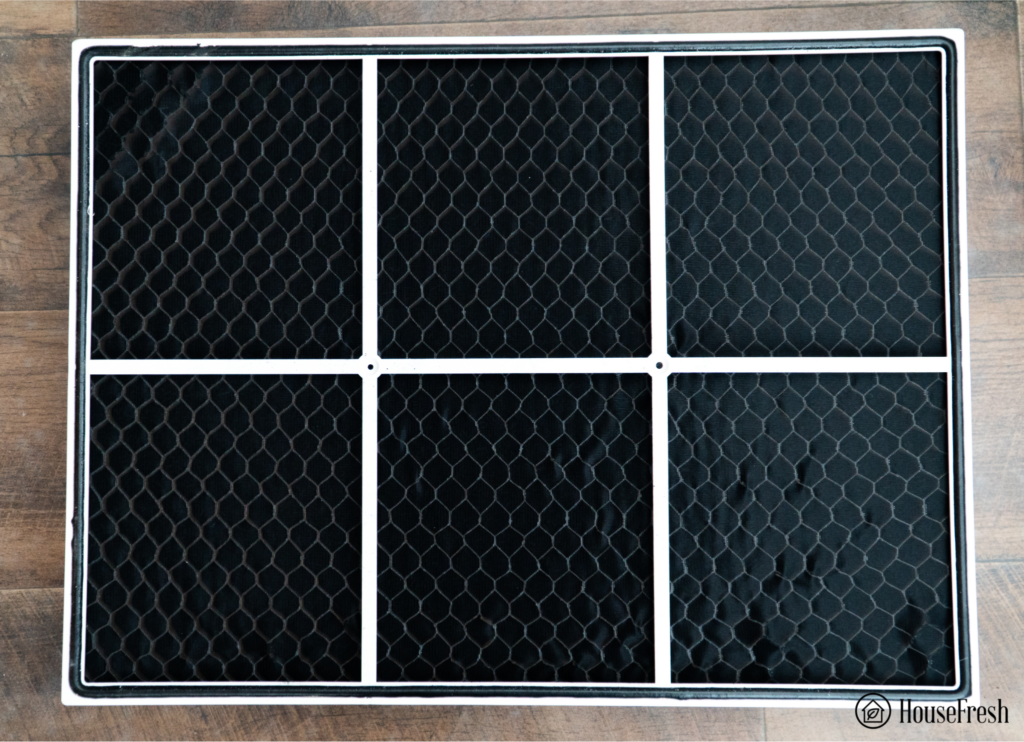
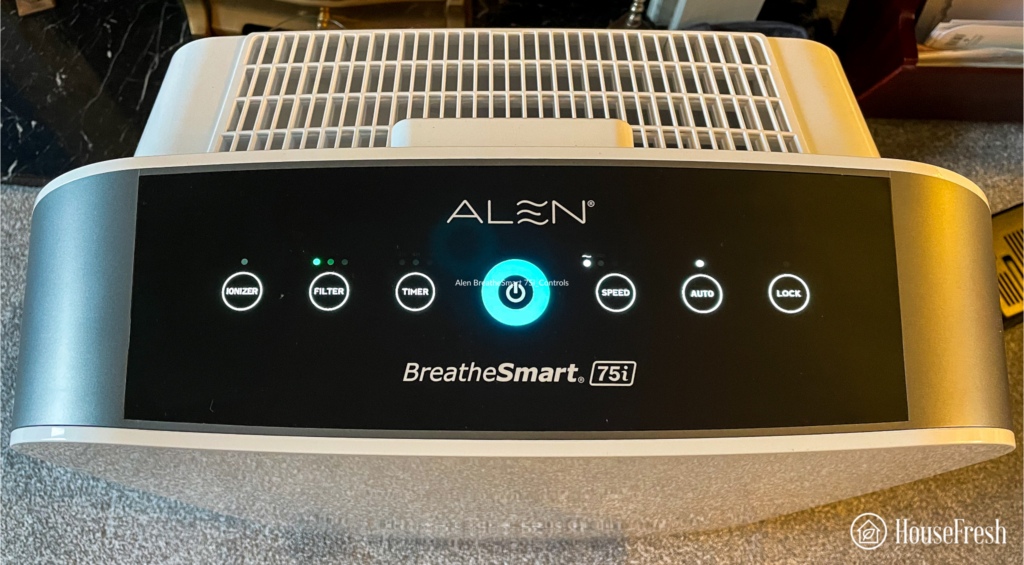
| HouseFresh rating: | ★★★★☆ |
| Time to clean our 728 cubic feet test room (with the device running at top speed): | 24 minutes |
| Air purifier technology: | True HEPA H13 filters with activated carbon pellets + Ionizer technology |
| Recommended room size (4.8 air changes per hour): | 512 sq. ft. |
| Clean air delivery rate (CADR): | Dust: 335.3 CFM Smoke: 330.5 CFM Pollen: 403.4 CFM |
| Dimensions (in inches / in cm): | 27H x 18.5W x 11.5D inches (68.58H x 46.99W x 29.21D cm) |
| Weight (in pounds / in kg): | 27 lbs (12.2 kg) |
| Filter life: | 12 – 15 months |
| Noise level in decibels (as reported by the manufacturer): | 24 – 49dB |
| Electricity consumption in watts (as reported by the manufacturer): | Lowest fan speed: 1.8 watts Highest fan speed: 45 watts |
| Estimated running cost (electricity consumption + official filter replacement): | $147.72 per year |
| Cost per CADR cfm (based on dust CFM as reported by AHAM): | $2.23 |
| Manufacturer’s warranty: | Lifetime (with product registration & active filter subscription) |
| Country of manufacture: | China |
Final thoughts
Many cheap air purifiers include carbon, such as the Levoit Core 300 and Taotronics AP-003. While these will be fine to deal with the odors created in a home, they will be unable to deal with major issues with VOCs and gasses such as Nitrogen dioxide. If you have an issue with gasses, you will need an air purifier with a large, activated carbon filter such as Alen 75i or IQAir Healthpro Plus. I hope the above guide is helpful and be sure to email me if you have any specific questions or issues that you need help with.



